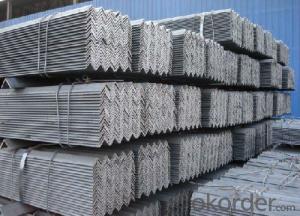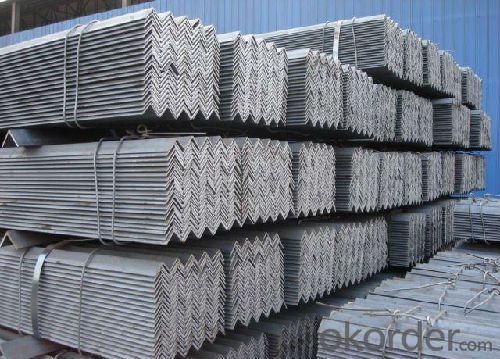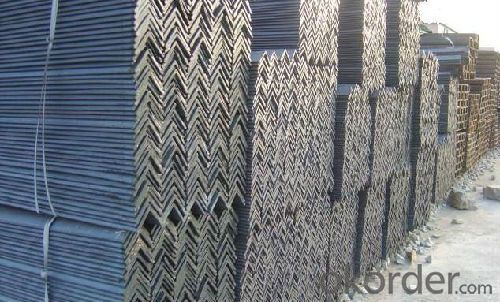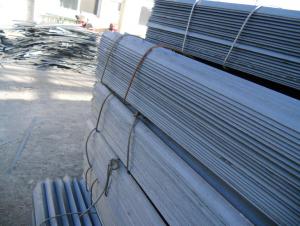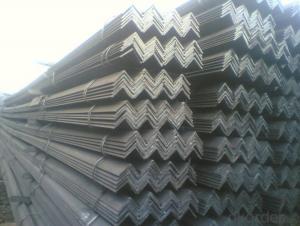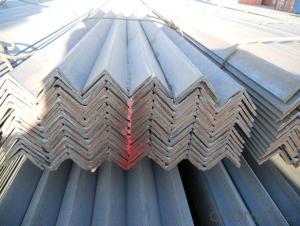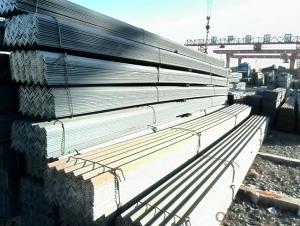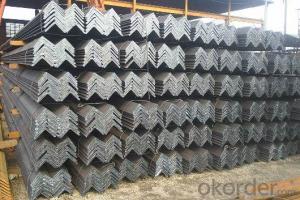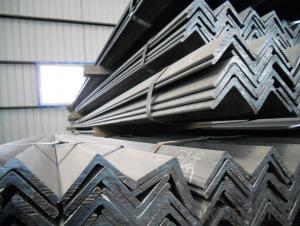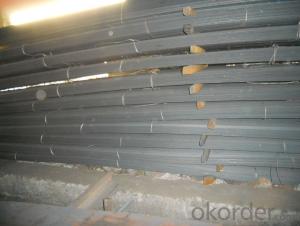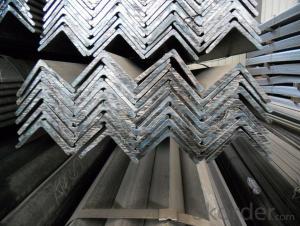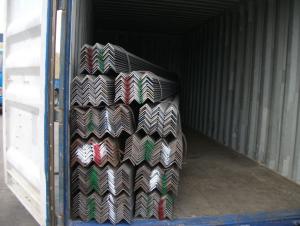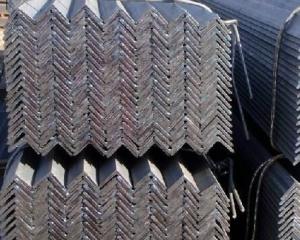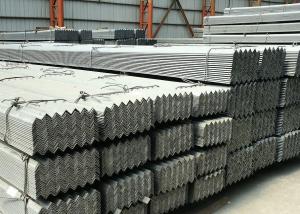Hot Rolled Equal Angle steel with grade competitive price
- Loading Port:
- Tianjin
- Payment Terms:
- TT OR LC
- Min Order Qty:
- 25 m.t.
- Supply Capability:
- 10000 m.t./month
OKorder Service Pledge
OKorder Financial Service
You Might Also Like
Specification
OKorder is offering high quality Hot Rolled Steel Angle at great prices with worldwide shipping. Our supplier is a world-class manufacturer of steel, with our products utilized the world over. OKorder annually supplies products to European, North American and Asian markets. We provide quotations within 24 hours of receiving an inquiry and guarantee competitive prices.
Product Applications:
Hot Rolled Steel Angle are ideal for structural applications and are widely used in the construction of buildings and bridges, and the manufacturing, petrochemical, and transportation industries.
Product Advantages:
OKorder's Steel Angle are durable, strong, and resist corrosion.
Main Product Features:
· Premium quality
· Prompt delivery & seaworthy packing (30 days after receiving deposit)
· Corrosion resistance
· Can be recycled and reused
· Mill test certification
· Professional Service
· Competitive pricing
Product Specifications:
Manufacture: Hot rolled
Grade: Q195 – 235
Certificates: ISO, SGS, BV, CIQ
Length: 6m – 12m, as per customer request
Packaging: Export packing, nude packing, bundled
Sizes: 25mm-250mm | ||
a*t | ||
25*2.5-4.0 | 70*6.0-9.0 | 130*9.0-15 |
30*2.5-6.6 | 75*6.0-9.0 | 140*10-14 |
36*3.0-5.0 | 80*5.0-10 | 150*10-20 |
38*2.3-6.0 | 90*7.0-10 | 160*10-16 |
40*3.0-5.0 | 100*6.0-12 | 175*12-15 |
45*4.0-6.0 | 110*8.0-10 | 180*12-18 |
50*4.0-6.0 | 120*6.0-15 | 200*14-25 |
60*4.0-8.0 | 125*8.0-14 | 250*25 |
FAQ:
Q1: Why buy Materials & Equipment from OKorder.com?
A1: All products offered byOKorder.com are carefully selected from China's most reliable manufacturing enterprises. Through its ISO certifications, OKorder.com adheres to the highest standards and a commitment to supply chain safety and customer satisfaction.
Q2: How do we guarantee the quality of our products?
A2: We have established an advanced quality management system which conducts strict quality tests at every step, from raw materials to the final product. At the same time, we provide extensive follow-up service assurances as required.
Q3: How soon can we receive the product after purchase?
A3: Within three days of placing an order, we will begin production. The specific shipping date is dependent upon international and government factors, but is typically 7 to 10 workdays.
Images:
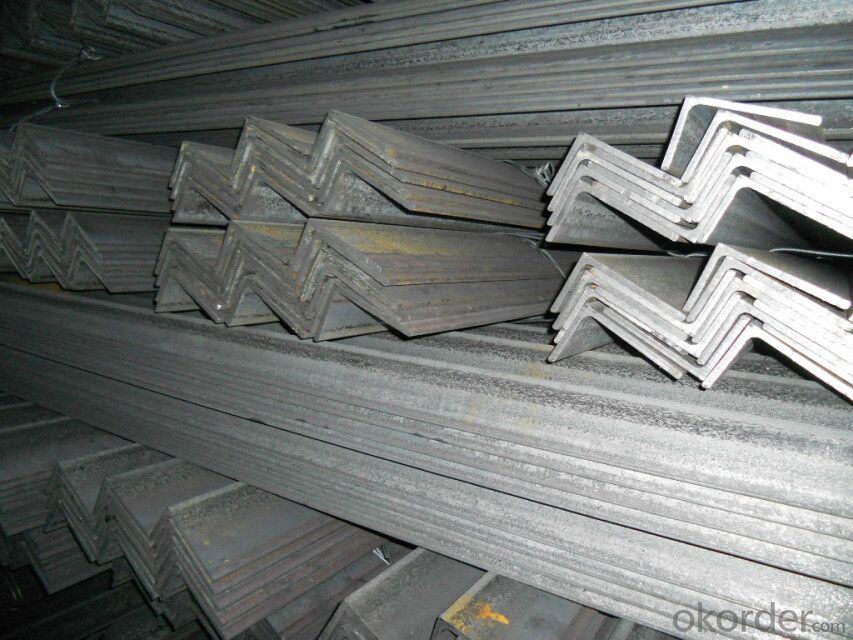
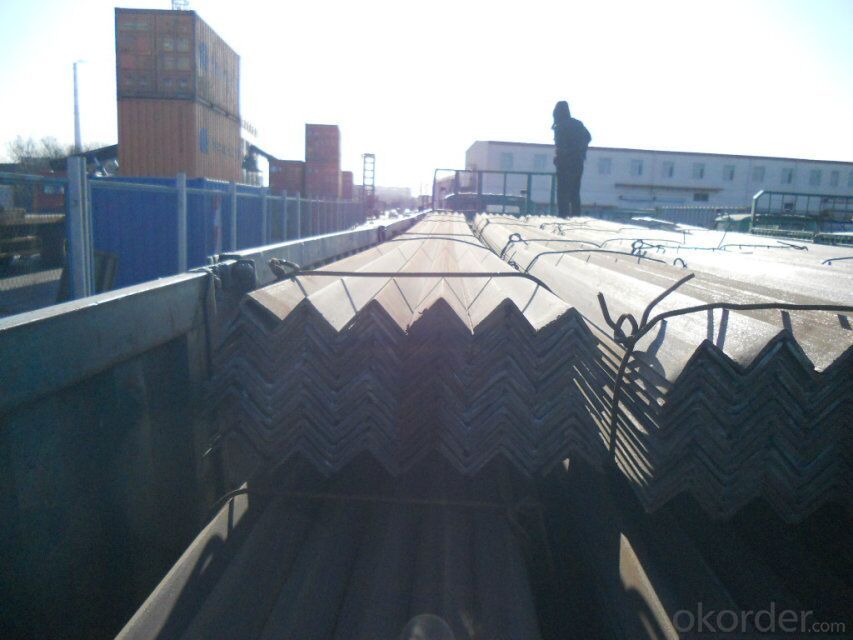
- Q: Can steel angles be painted or finished for decorative purposes?
- Indeed, steel angles have the potential to be painted or finished in order to achieve decorative purposes. These steel angles, commonly utilized in construction and industrial settings, can undergo painting or finishing procedures to enhance their visual appeal and contribute a decorative element. The act of painting steel angles serves the dual purpose of safeguarding them against corrosion and rust, while also allowing for customization to align with the aesthetic requirements of the particular project. Furthermore, alternative finishes such as powder coating, electroplating, or galvanizing can be employed to augment both the appearance and durability of these steel angles. Through the application of paint or finishing techniques, steel angles can be seamlessly integrated into a variety of architectural and design ventures, thereby serving both functional and visually enticing purposes.
- Q: How do steel angles perform in corrosive environments?
- Steel angles typically have good performance in corrosive environments, but their resistance to corrosion depends on the type and grade of steel used. In general, steel angles made from stainless steel or galvanized steel are more resistant to corrosion compared to carbon steel angles. Stainless steel angles contain chromium, which forms a passive layer on the surface that helps protect against corrosion. This makes them highly resistant to rust and other forms of corrosion, even in highly corrosive environments such as saltwater or chemical plants. Galvanized steel angles are steel angles that have been coated with a layer of zinc. This zinc coating acts as a sacrificial barrier, protecting the underlying steel from corrosion. Galvanized steel angles are particularly effective in environments with high humidity or exposure to moisture, as the zinc coating provides excellent corrosion resistance. On the other hand, carbon steel angles are more susceptible to corrosion. Without any protective coating, carbon steel angles can rust and corrode when exposed to moisture or corrosive substances. However, there are various methods to enhance the corrosion resistance of carbon steel angles, such as applying protective coatings or using corrosion inhibitors. In summary, steel angles can perform well in corrosive environments, but the choice of steel grade and protective measures is crucial for their long-term corrosion resistance. Stainless steel angles and galvanized steel angles are generally preferred for their superior corrosion resistance, while carbon steel angles require additional protection to ensure their durability in corrosive environments.
- Q: What is the meaning of the number of angle steel
- Angle called angle, the steel strip is perpendicular to each other on both sides into the corner. The angle iron can be made up of different force components according to the different structure, and can also be used as the connecting piece between the components.
- Q: How to determine the neutral axis of the angle bar?
- The neutral axis of angle iron or channel steel needs to be calculated, but it can be checked directly.
- Q: Are steel angles available in different alloys?
- Yes, steel angles are available in different alloys. Steel angles are typically made from carbon steel, which is the most common and versatile type of steel. However, there are also other alloys available for specific applications. For example, stainless steel angles are made from an alloy that contains chromium, which provides increased resistance to corrosion. Additionally, there are high-strength low-alloy (HSLA) steel angles that are made with a combination of carbon steel and small amounts of other elements like manganese, phosphorus, or sulfur to enhance their strength and durability. Overall, the availability of different alloys for steel angles allows for a wide range of applications and properties to meet specific needs in various industries.
- Q: What are the common surface finishes for steel angles?
- Some common surface finishes for steel angles include painted, galvanized, and mill finish.
- Q: How do steel angles perform in cold weather conditions?
- Steel angles perform well in cold weather conditions due to their high durability and strength. The properties of steel, such as its ability to withstand extreme temperatures and resist deformation, make it an ideal material for various applications in cold environments. Steel angles are commonly used in construction, infrastructure, and manufacturing industries, where they provide structural support and stability. In cold weather, steel angles maintain their structural integrity, ensuring the safety and longevity of the structures they are used in. Additionally, steel has a low thermal expansion coefficient, meaning it does not contract or expand significantly with temperature changes, making it less susceptible to warping or cracking in freezing conditions. Overall, steel angles are a reliable choice for cold weather conditions, offering excellent performance and reliability.
- Q: Can steel angles be drilled or cut?
- Indeed, it is possible to drill or cut steel angles. Steel angles, being a flexible structural material, find extensive use in diverse construction and manufacturing endeavors. It is effortless to drill them for the purpose of creating holes for bolts, screws, or other fastening elements. Moreover, steel angles can be fashioned into specific lengths or shapes by employing tools like saws, plasma cutters, or shears. The capacity to drill or cut steel angles renders them exceedingly adaptable and fitting for an extensive array of applications.
- Q: What are the different methods of surface cleaning for steel angles?
- Some different methods of surface cleaning for steel angles include mechanical cleaning through techniques like sandblasting or wire brushing, chemical cleaning using solvents or acids, and electrochemical cleaning through processes like electrolysis.
- Q: What are the different types of steel angles connections?
- There are several types of steel angle connections, including bolted connections, welded connections, and hybrid connections. Bolted connections use bolts and nuts to join the steel angles together, providing flexibility for disassembly and reassembly. Welded connections involve fusing the steel angles together using heat, creating a strong and permanent connection. Hybrid connections combine both bolted and welded connections, utilizing the benefits of each method for optimal strength and convenience.
Send your message to us
Hot Rolled Equal Angle steel with grade competitive price
- Loading Port:
- Tianjin
- Payment Terms:
- TT OR LC
- Min Order Qty:
- 25 m.t.
- Supply Capability:
- 10000 m.t./month
OKorder Service Pledge
OKorder Financial Service
Similar products
Hot products
Hot Searches
Related keywords
